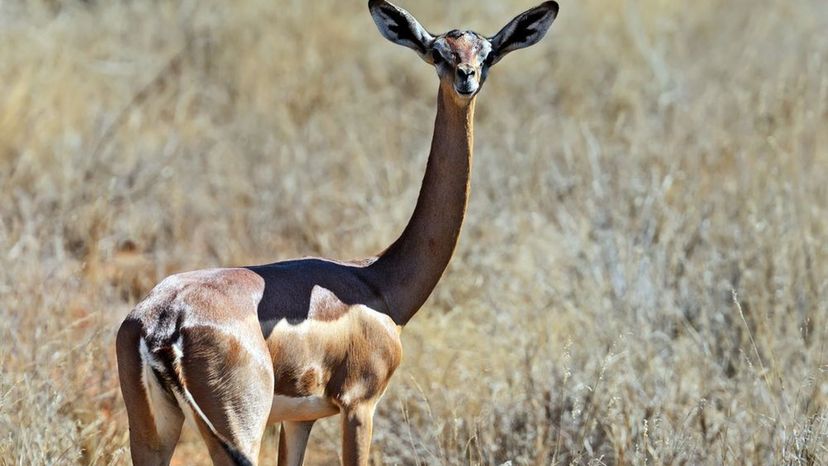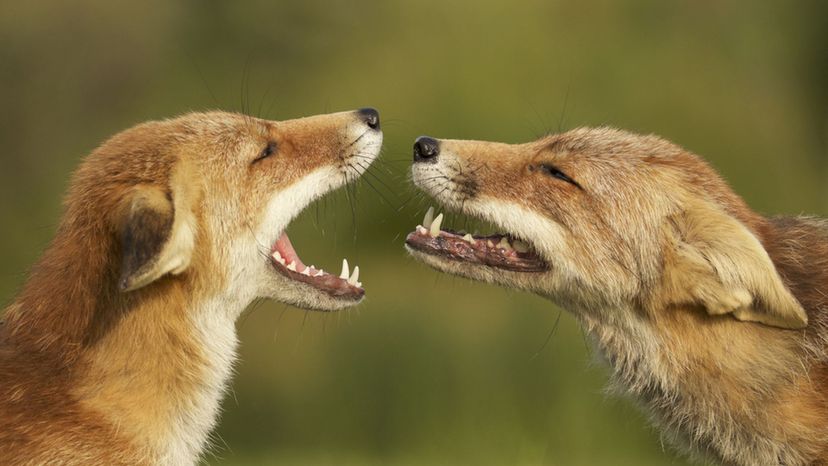
Image: Shutterstock
About This Quiz
Because zoo animals come from all over the world, there are tons of species to learn about. Some zoos have species you've probably never heard of. Or have you? Play on to find out!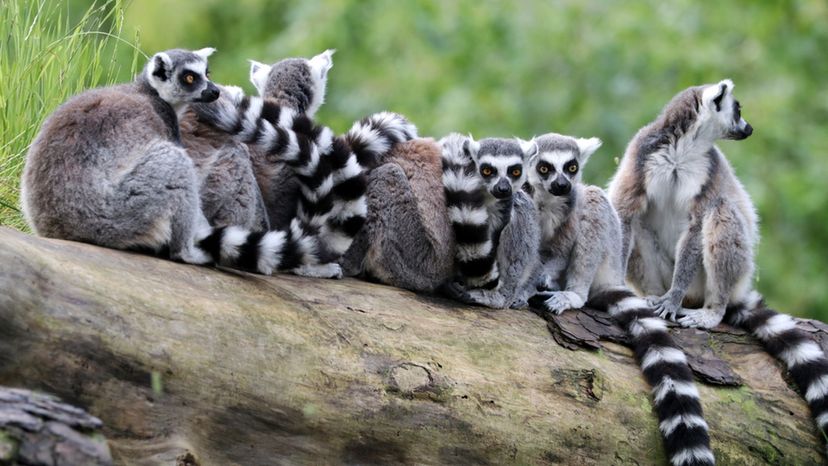
Shutterstock
Which zoo animal is shown here?
Kookaburra
Ring-Tailed Lemur
Ring-tailed lemurs, currently (2017) considered an endangered species, are a particularly social animal. Like other lemurs, ring-trailed lemurs have a complex social order with an alpha female lemur holding dominance over all males. They eat mainly leaves and fruits, but also eat certain types of insects.
Ostrich
Tufted Puffin

Shutterstock
Which zoo animal is shown here?
Caribbean Flamingo
The Caribbean flamingo is the only type of flamingo that is indigenous to North America. They are typically found in wetland areas and lakes located within a certain tropical environment, such as the Caribbean. There are six types of flamingos, and Caribbean flamingos are the brightest in color of all varieties. Their long legs and necks allow them to wade further out into the water to catch prey than other birds.
Grizzly Bear
Chimpanzee
Woodchuck

Shutterstock
Which zoo animal is shown here?
Marabou Stork
Galapagos Tortoise
The Galapagos tortoise is indigenous to the Galapagos Islands. Unfortunately, due to over hunting and non-indigenous animals (dogs, cats, etc) destroying tortoise eggs, the population of Galapagos tortoises is low. They are considered to be vulnerable, according to their conservation status. This is a class below being endangered. These tortoises can live into their 100s, making them one of the longest-living vertebrates.
Snapping Turtle
Puma
Advertisement
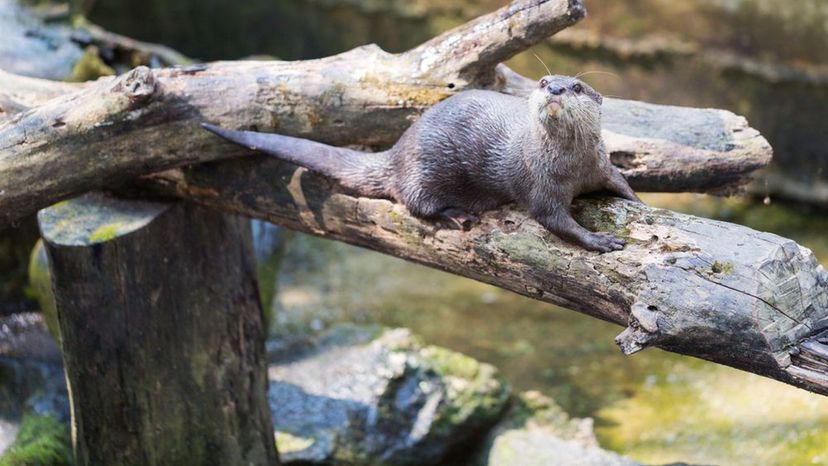
Shutterstock
Which zoo animal is shown here?
Polar Bear
Banteng
Spotted Neck Otter
The spotted neck otter is indigenous to countries in the southern half of Africa. They are not a very social animal, and their diet consists mainly of fish. The female otter can give birth to up to three babies at a time, which she will keep in her care for about a year before they're ready to be on their own. This species is not considered to be at risk of extinction.
Red Kangaroo
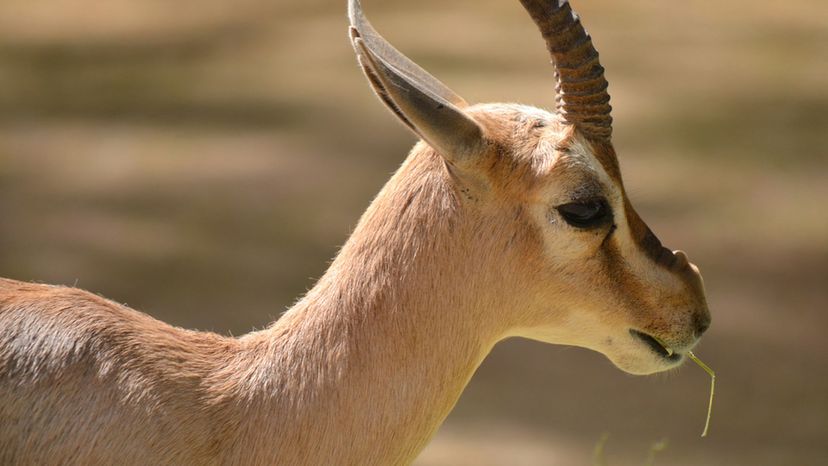
Shutterstock
Which zoo animal is shown here?
Tumblebug
Wyoming Toad
Grevy's Zebra
Speke's Gazelle
As the smallest variation of-of gazelles, Speke's Gazelles have to be especially careful of predators. Newborn babies remain still in the bush all day except to feed. The Speke's Gazelle used to be abundant in certain places but now is endangered due to a low food supply. In the past 30-40 years, they have struggled to compete with livestock for scarce food sources in a hot, dry climate.
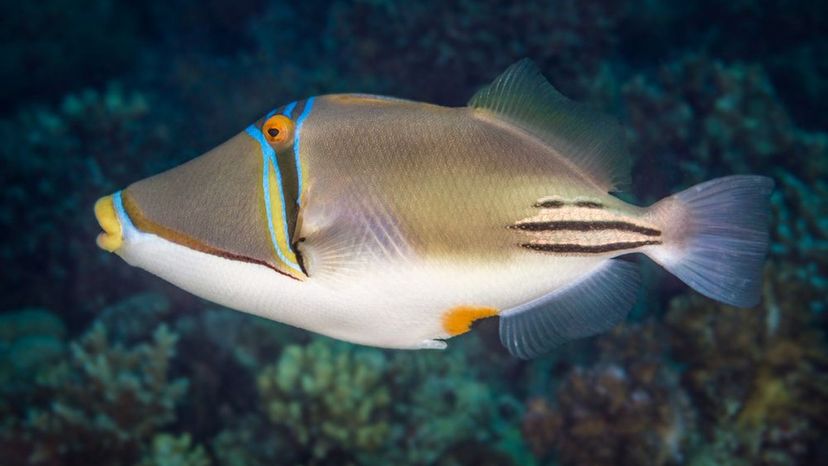
Shutterstock
Which zoo animal is shown here?
Huma Huma Triggerfish
The Huma Huma triggerfish, also known as the Picasso triggerfish, is the Hawaiian state fish. While this type of fish can be aggressive, it is possible for them to share a habitat with other large nonaggressive fish. Their tendencies toward aggressiveness vary by fish. The Huma Huma triggerfish eats a variety of crustaceans it finds by sifting through sand with its mouth, spitting out inedible material.
King Penguin
Barned Owl
Tomato Frog
Advertisement
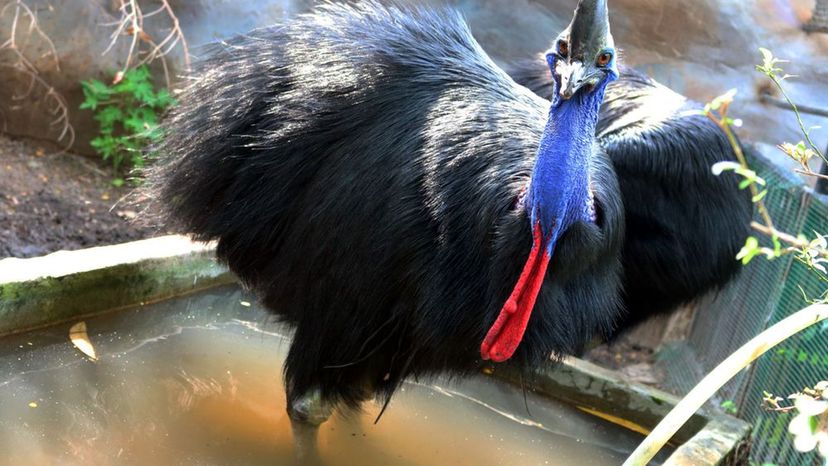
n/a
Which zoo animal is shown here?
Bolkar Viper
Crested Coua
Fennec Fox
Cassowary
Cassowaries are large birds, related to the emu, that cannot fly. Though shy and reclusive, Cassowaries can cause serious damage to humans if they feel threatened. They have a razor-like claw, which can grow up to five inches long, on each foot. Female cassowaries leave their eggs right after laying them. The father takes over incubating the eggs for 50 days until they hatch, and then raises the babies for 9 months.
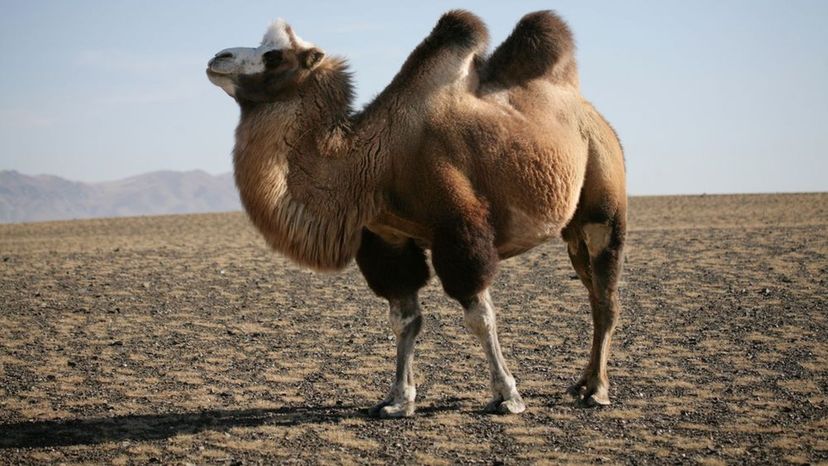
Shutterstock
Which zoo animal is shown here?
Dwarf Zebu
Bactrian Camel
The Bactrian camel is a domesticated camel. Their wild counterparts, Wild Bactrian camels, are critically endangered. These camel's grow a thick, furry coat in the winter, and then shed until they're almost hairless in the summer. Their eyelashes are very long and their nostrils are extended to keep out dust and sand.
Red Panda
Crested Screamer
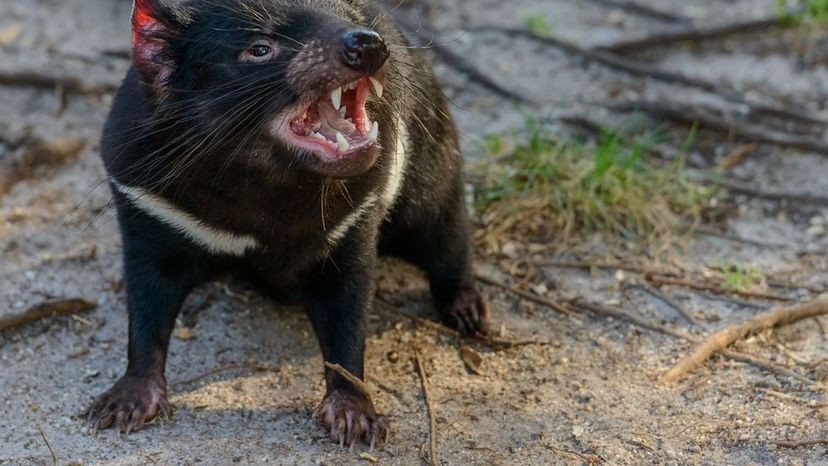
Shutterstock
Which zoo animal is shown here?
Coyote
Cat
Dingo
Tasmanian Devil
Tasmanian devils get their name from the screaming noise they make when searching for food at night. While these animals sit at the top of the food chain, they are endangered due to a disease that is spread via the animals biting each other. It is a form of terminal cancer that only Tasmanian devils can contract. Australia launched a program to save the animal while a cure is being developed. Six zoos in the United States care for Tasmanian devils that are not ill. It is a member of the marsupial family, meaning they carry their young in pouches on their front sides as the babies develop.
Advertisement
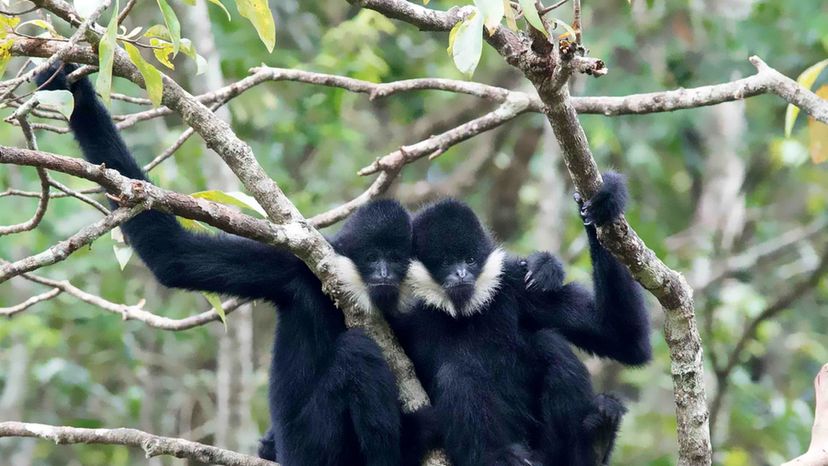
Shutterstock
Which zoo animal is shown here?
Water Scorpion
White-Cheeked Gibbon
White-cheeked gibbons are a part of the ape family, though they are much smaller than Great apes. Gibbons remain with their biological families until around their eighth year of life, after which they go off in search of their own mate and attempt to claim territory. Their diet is mainly fruit, but it also includes sticks, leaves, and the occasional bird egg.
Lion
Okapi
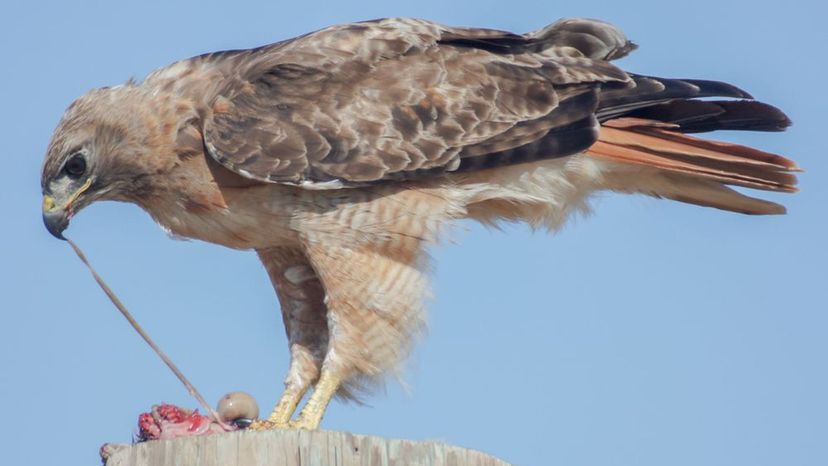
Shutterstock
Which zoo animal is shown here?
Red-Tail Hawk
Red-tail hawks are the most commonly sighted hawk and one of the largest birds in North America. They can remain in flight for up to 9 hours. When hunting, they either soar high above the ground and swoop down to snatch their prey, or they sit in trees, on posts, etc. to wait for their prey to go by. They eat small mammals.
Guira Cuckoo
Fruit Dove
Domestic Goat

Shutterstock
Which zoo animal is shown here?
Meerkat
Toco Tucan
Cheetah
Dingo
Dingos are wild dogs that have been in Australia for about 4,000 years. They are the largest carnivorous mammal in Australia. Though some people have domesticated them, the legality of this varies by country and region. Wild dingos are considered vulnerable to extinction by conservationists.
Advertisement
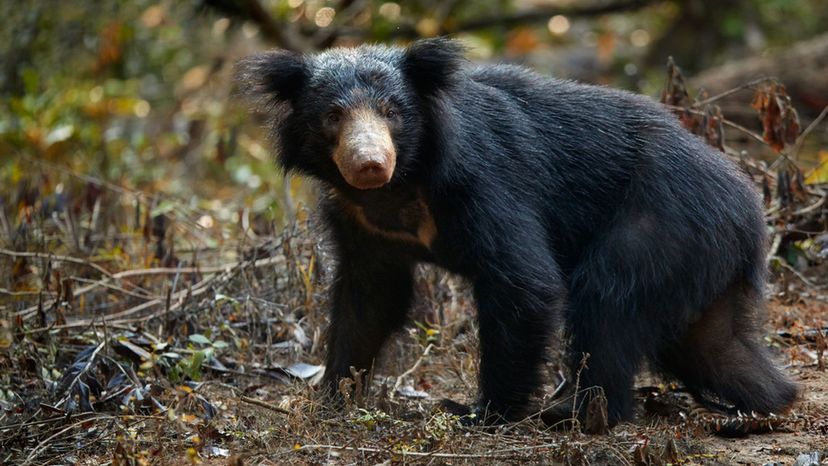
n/a
Which zoo animal is shown here?
Polar bear
Stanley Crane
Sloth bear
Sloth bears are excellent climbers. They retrieve food, such as honey bees, termites, or other insects, by climbing trees. Sloth bears have a mouth and lips designed for sucking insects out of crevices. Due to poaching and loss of habitat, they're listed as vulnerable to extinction.
Snow Leopard

n/a
Which zoo animal is shown here?
Greater Kudu
The Greater Kudu can reach speeds of up to 62 miles per hour and is considered a "near threatened" species, which means it's not currently endangered for extinction, but could be in the near future. Male Greater Kudus tend to be more independent, traveling alone or in small packs of other males. They are a peaceful species, with dominance determined by displays of size and not by violence.
Gazelle
Caribou
Elk
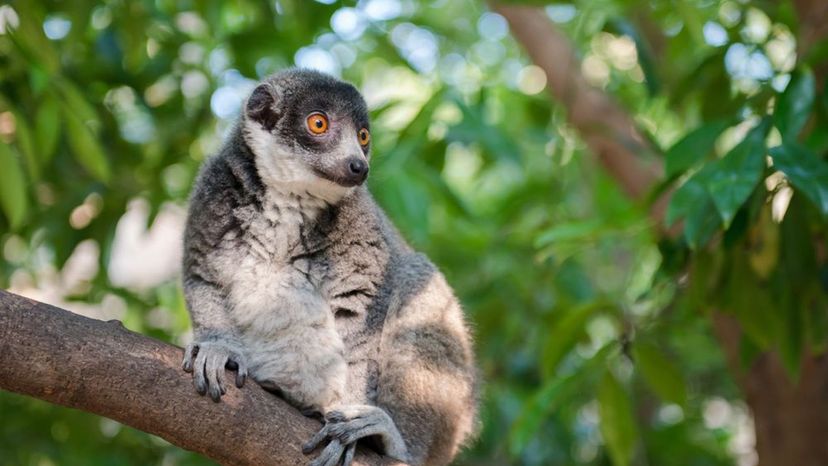
Shutterstock
Which zoo animal is shown here?
Anteater
Sloth
Mongoose Lemur
Mongoose Lemurs are cathemeral, which means they are active at different times during the day and night. The times they are active seems to be dependent upon the season. During the warmer, wet months, Mongoose lemurs appear to be more active during the evening hours. At the beginning of the dry season, they are more active at night (nocturnal).
Monkey
Advertisement
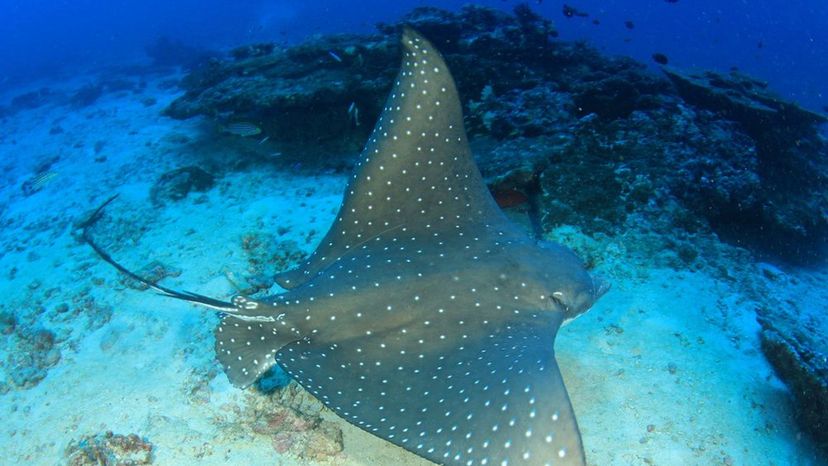
Shutterstock
Which zoo animal is shown here?
Stinger
Spotted Eagle Ray
Spotted Eagle Rays are on their way to the endangered species list, currently listed as a "near threatened" in regards to extinction. This species can grow to widths close to 11 feet, making the spotted variety one of the largest members of the eagle ray family.
Hammerhead shark
Manatee
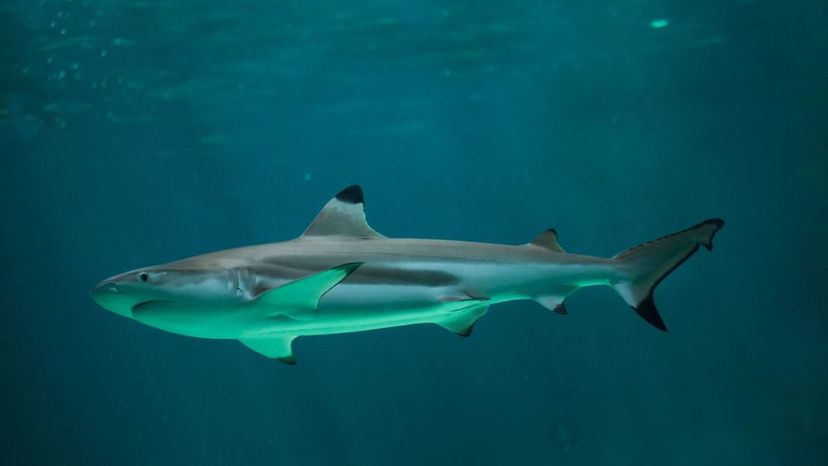
Shutterstock
Which zoo animal is shown here?
Orca (killer) whale
Blacktip reef shark
The Blacktip reef shark may seem menacing and dangerous, but with a diet that consists mainly of small fish, these sharks are easily frightened off by humans. They hunt mainly at the edges of reefs and in coral lagoons.
Great white shark
Dolphin
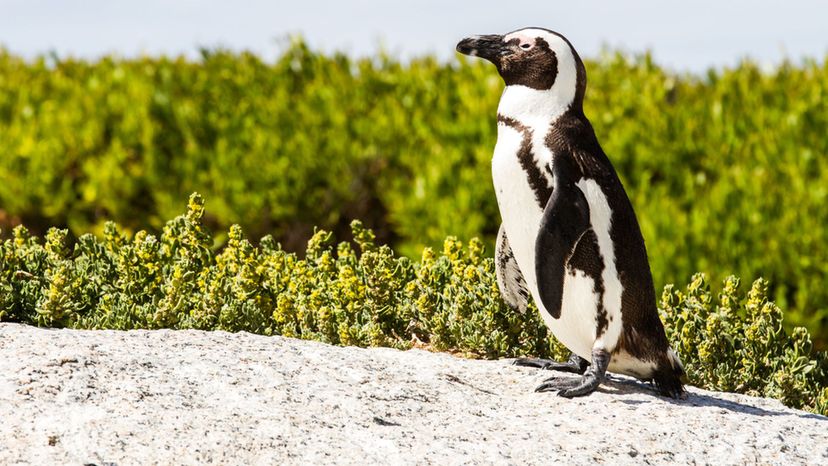
Shutterstock
Which zoo animal is shown here?
Peacock
Puffin
Emu
African Penguin
The African penguin is also known as the jackass penguin and the black-footed penguin. This species of penguin is classified as endangered - the population size of African penguins has declined by 60 percent over the past 28 years.
Advertisement
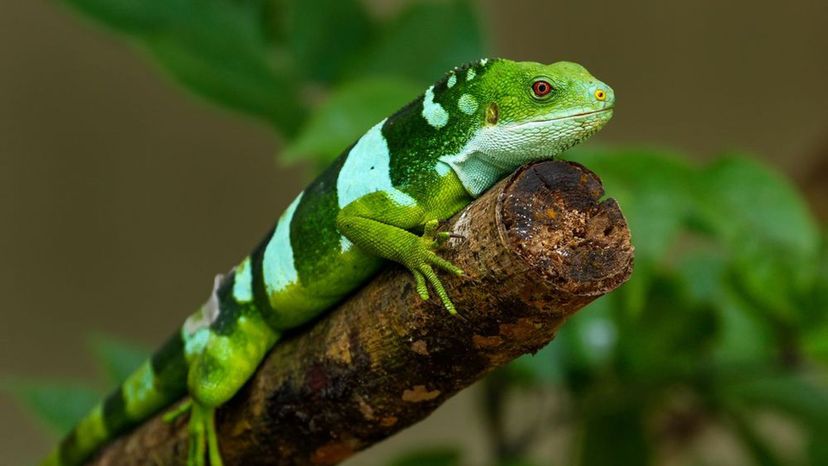
Shutterstock
Which zoo animal is shown here?
Fiji banded iguana
Out of all the different iguana species (44) in the world, there are just two confined to the small island nation of Fiji: the Fiji banded iguana and its very close relative, the Fiji crested iguana. Both species are classified as endangered. Their populations have been decreasing due to the introduction of house cats and mongoose to the island.
Reptar
Bibron's gecko
Bearded dragon
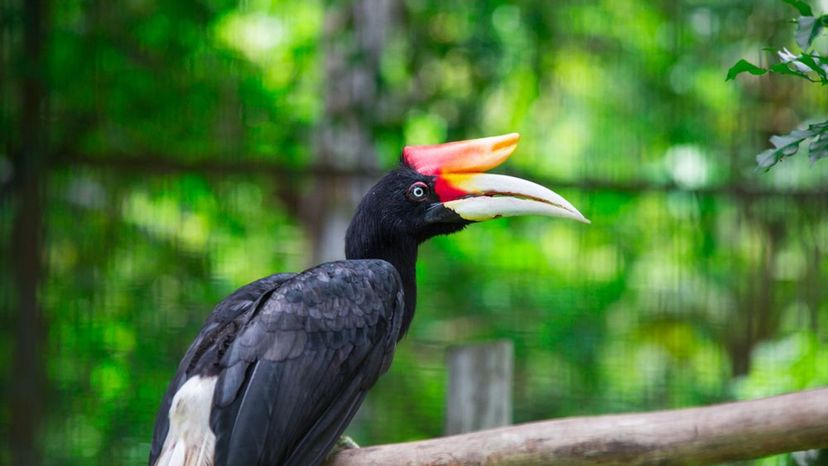
Shutterstock
Which zoo animal is shown here?
Scarlet Macaw
Parrot
Rhinoceros Hornbill
The rhinoceros hornbill can be found in the lowland hill forests of a specific area of the world, including Indonesia, Brunei, Thailand, Java, Malaysia, and Sumatra. After hatching, chicks remain enclosed in a cavity built by their parents for 80 days. Food is passed through to the chicks through a tiny hole.
Bluegray Tanager

Shutterstock
Which zoo animal is shown here?
Finch
Parakeet
Peacock
Crested Coua
A species of cuckoo bird, the crested coua lives in Madagascar and is usually 18 to 24 inches long. This type of bird isn't great at flying and can really only manage flapping itself into a tree. They are not equipped to fly long distances.
Advertisement
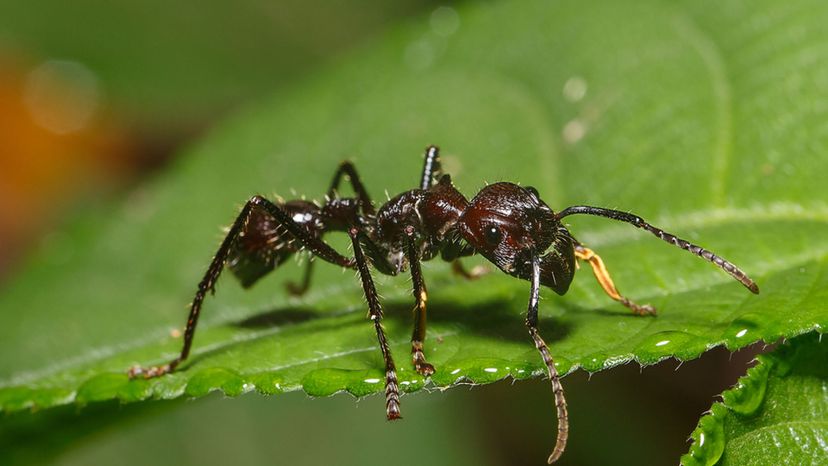
Shutterstock
Which zoo animal is shown here?
Black carpenter ant
Bullet Ant
The bullet ant has the most painful sting in the world, with a pain described to be as blinding as sticking your finger in an active electrical socket. Side effects can last for up to 14 hours after being stung.
Flying ant
Spider
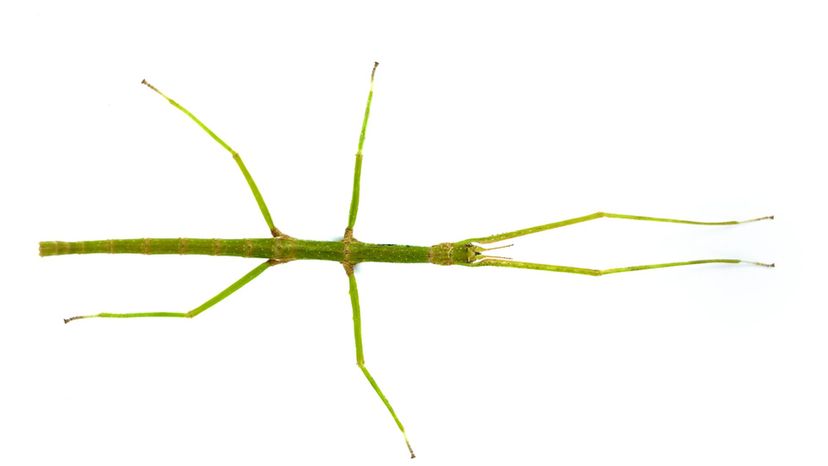
Shutterstock
Which zoo animal is shown here?
Vietnamese Walkingstick
Vietnamese walkingsticks live for approximately six months and can be found throughout southeast Asia and Vietnam. There are around 2,000 total species of walking sticks, only 10 of which are found in North America.
Praying mantis
Locust
Cicada
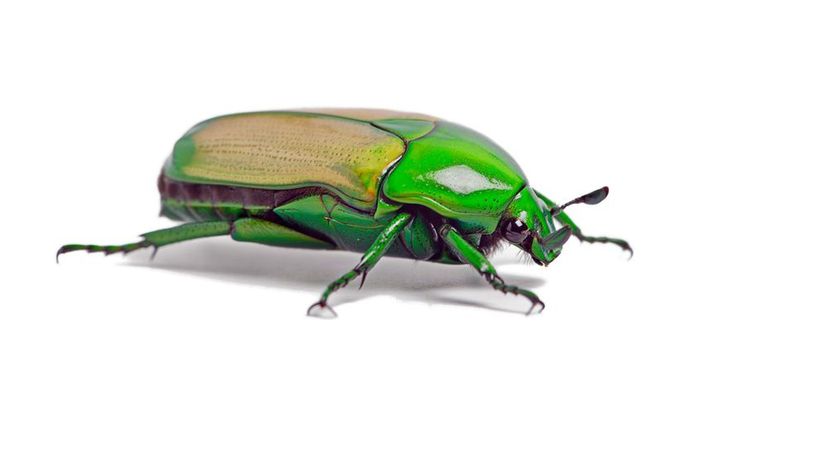
Shutterstock
Which zoo animal is shown here?
Box elder
Stinkbug
African jewel beetle
The African jewel beetle can be found near the equator of central Africa. For many Africans, insects are an affordable, decent source of protein, making the Giant jewel beetle (a relative of the African jewel beetle) the most consumed insect in the area. Grasshoppers, stinkbugs, Mopani worms, and termites are also on the menu.
Lady bug
Advertisement
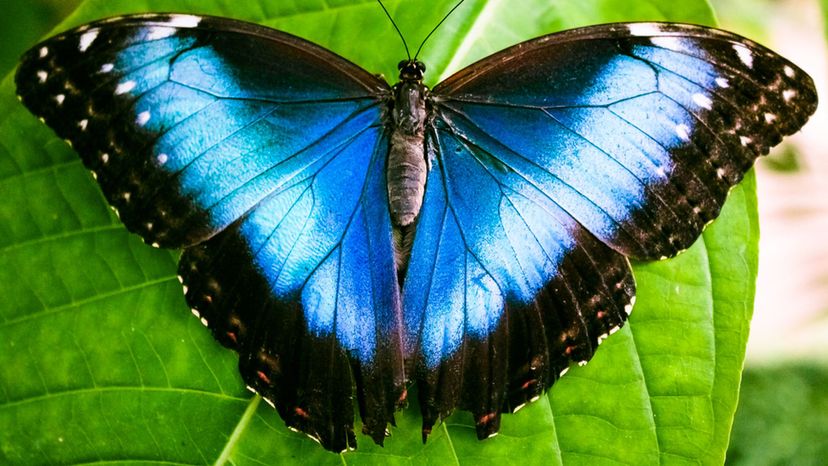
Shutterstock
Which zoo animal is shown here?
Silkworm
Caterpillar
Monarch
Blue Morpho
The blue morpho is native to Central and South American rainforests and has a lifespan of about 115 days. If you ever want to see one up close and personal, check out the exhibit at the Saint Louis Zoo!
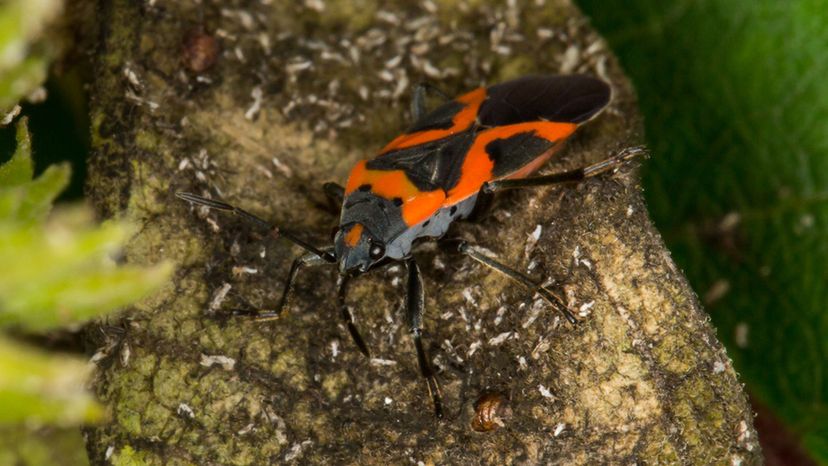
Shutterstock
Which zoo animal is shown here?
Milkweed bug
As its name implies, this insect feasts on the milkweed plant, which contains toxins. These toxins make the milkweed bug toxic for predators to eat - if eaten, the predator would most likely fall ill. The milkweed bug lives for about a month.
Lightening bug
Brown beetle
Striped hornet
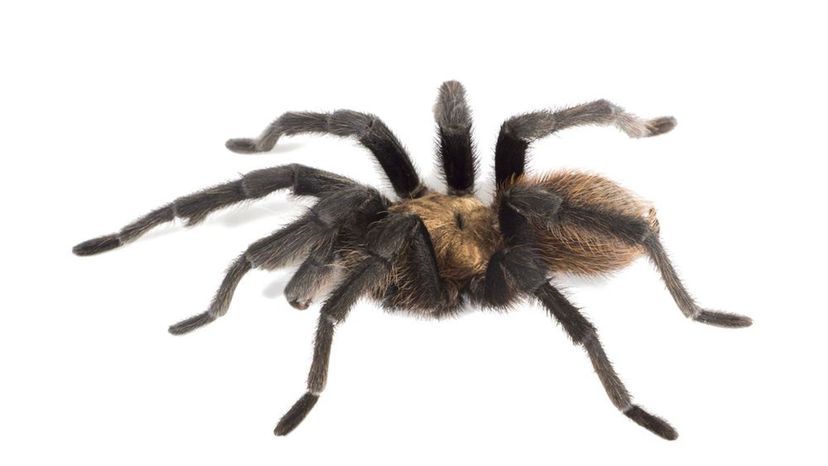
Shutterstock
Which zoo animal is shown here?
Banana spider
Black widow
Missouri tarantula
Despite its heinous appearance, the Missouri tarantula is relatively harmless to humans, which seems counter-intuitive considering it's the largest arachnid in the entire state. It's usually found in the southern part of the state, around forests, rocky terrain, and dry glades surrounding the MO river.
Wolf spider
Advertisement
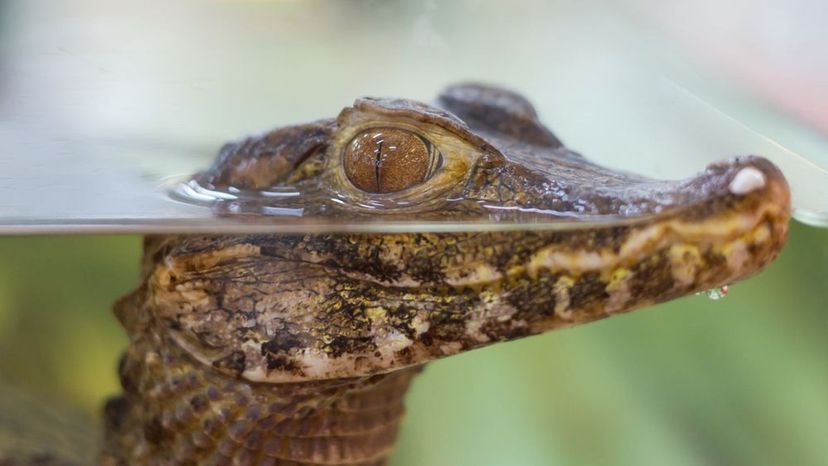
Shutterstock
Which zoo animal is shown here?
Dwarf caiman
The dwarf caiman is native to South America and is the smallest species within the alligator and crocodile families. They are nocturnal animals who live by themselves or with a partner.
Gila monster
Snapping turtle
Komodo dragon
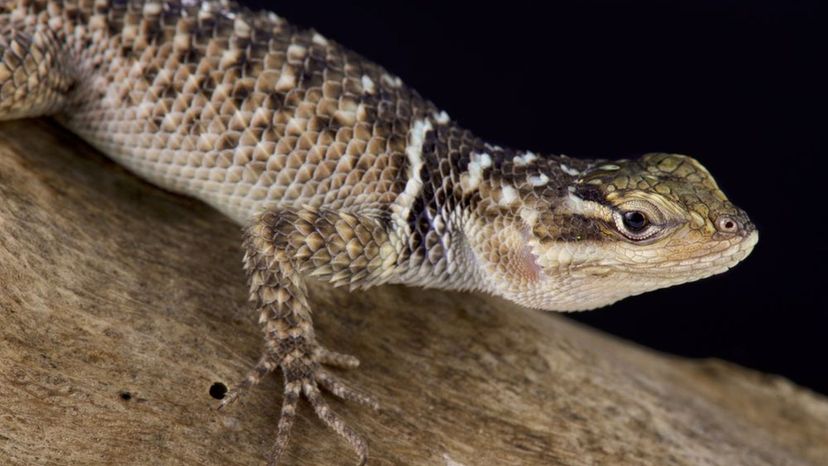
Shutterstock
Which zoo animal is shown here?
Chameleon
Blue spiny lizard
The blue spiny lizard is just one species of the spiny lizard family, which are named for after their ridged, pointy, spiny scales. This particular species is the largest of the spiny lizard family. They are native to Mexico and southern Texas.
Iguana
Bearded lizard
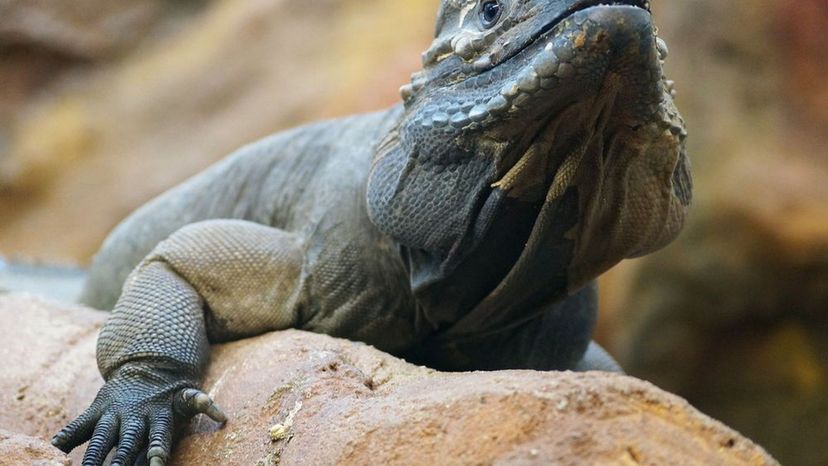
Shutterstock
Which zoo animal is shown here?
Long tail reptile
Bearded dragon
Chameleon
Rhinoceros iguana
The rhino iguana is named for the two (sometimes three) horn-like bumps protruding from directly above its nostrils. This species is native to Haiti and the Dominican Republic (Hispaniola) and average two feet in length.
Advertisement
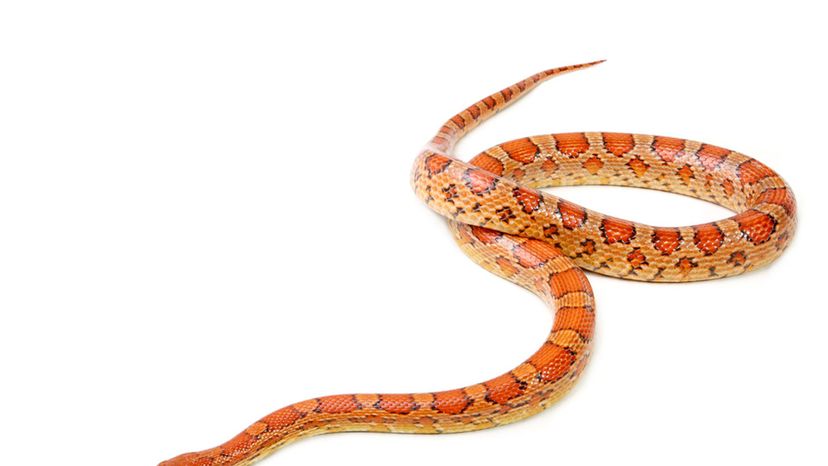
n/a
Which zoo animal is shown here?
Rattlesnake
Corn snake
The corn snake is a popular household pet and one of the most widely adopted snack species. They come in a variety of patterns and colors and are found in nature, most commonly in the southeastern United States.
Boa constrictor
Viper
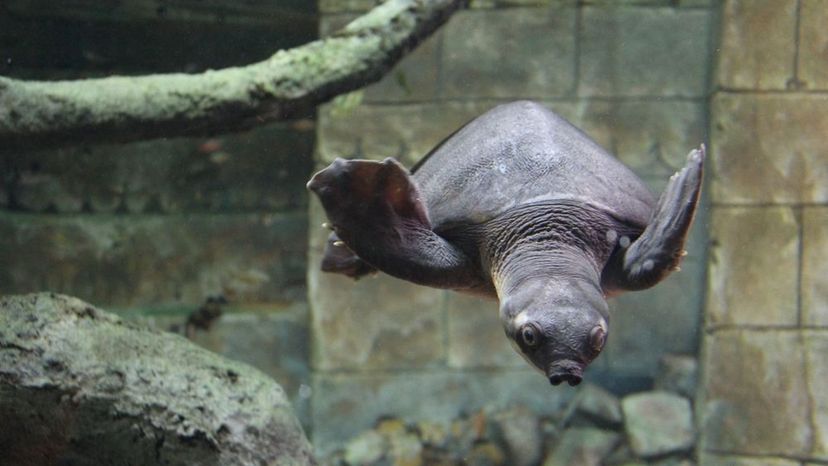
Shutterstock
Which zoo animal is shown here?
Box turtle
Soft shell
Tortoise
Pig-Nosed Turtle
The pig-nosed turtle is classified as a vulnerable species and can only be found in Australia and Papua New Guinea. The species population has been declining for a variety of reasons, including habitat loss/destruction, over harvesting of eggs, over fishing of large adults, and the illegal animal trade's demand for this cute, strange creature.
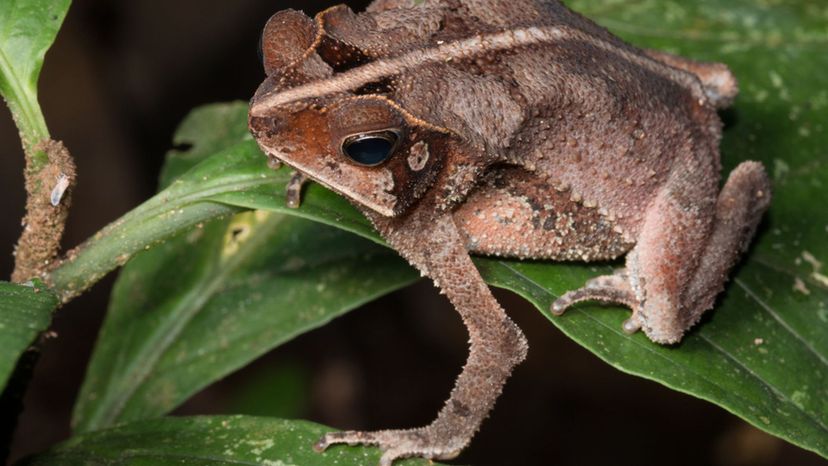
Shutterstock
Which zoo animal is shown here?
Purple-bellied toad
Bullfrog
Puerto Rican crested toad
The Puerto Rican crested toad matures from an egg to a toadlet in just 18 days. They are a nocturnal species and are considered critically endangered. Until 1967, they were believed to be extinct.
Rainforest frog
Advertisement

Shutterstock
Which zoo animal is shown here?
African penguin
Horned puffin
The horned puffin is a member of the Alcid family of bird, which means they're capable of diving and swimming underwater by using their wings to propel themselves and their feet to steer. All puffin species mate for life.
Crested penguin
Toucan
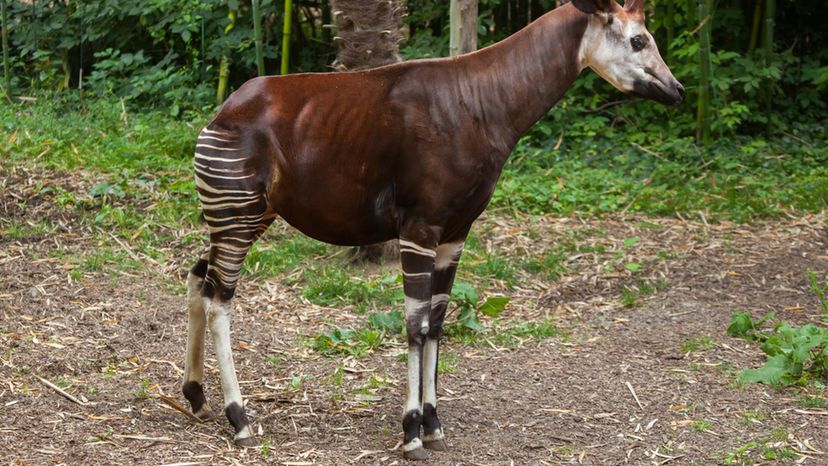
n/a
Which zoo animal is shown here?
Okapi
The Okapi is a rare species native to Uganda and the Democratic Republic of the Congo. It has a tongue that can grow up to 18 inches long. Giraffes are their closest relative.
Antelope
Caribou
Gazelle
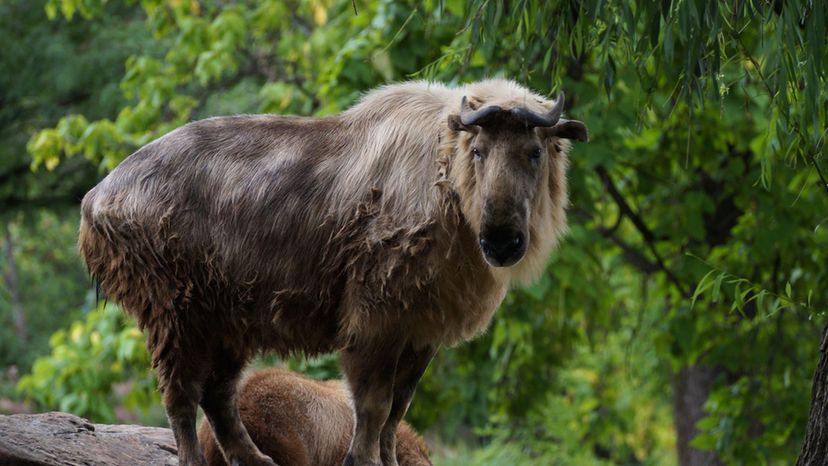
Shutterstock
Which zoo animal is shown here?
Billy goat
Mountain goat
Sichuan Takin
This species is native to the mountainous bamboo forests of western China. Humans are their main predator, and they are considered to be of the goat family.
Antelope
Advertisement
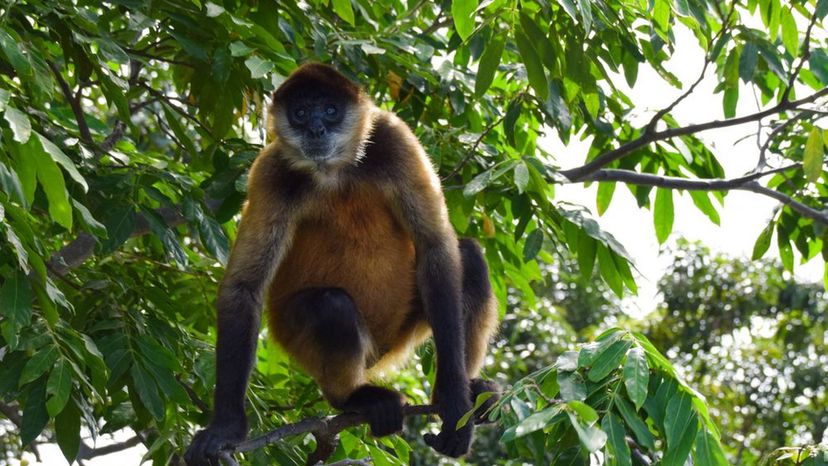
Shutterstock
Which zoo animal is shown here?
Black-handed spider monkey
This species is native to the upper level canopies of the rainforests in Central and South America. Their diet mainly consists of seeds, nuts, fruits, flowers, eggs, and insects.
Gorilla
Ape
Baboon
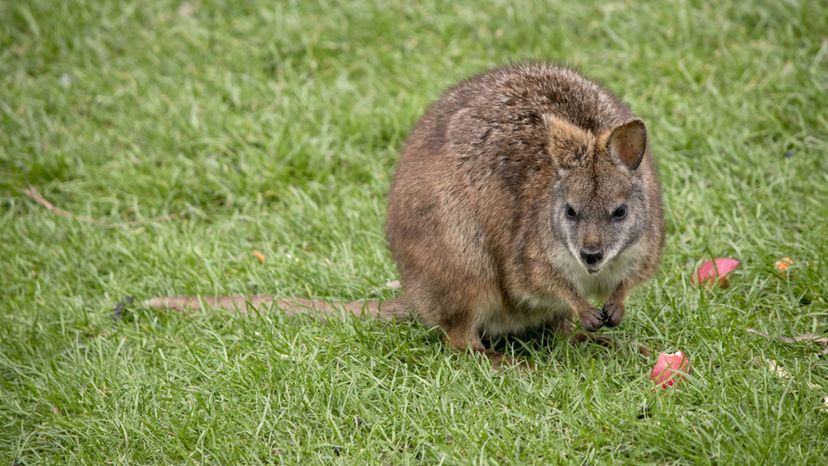
Shutterstock
Which zoo animal is shown here?
Wombat
Tammar wallaby
This species is native to the thickets and shrublands of Australia. It is a marsupial, like the Tasmanian devil, and is basically a smaller version of the Kangaroo.
Kangaroo
Tasmanian devil

Shutterstock
Which zoo animal is shown here?
Degu
The Degu is native to the Andes and is considered social in comparison to other rodent species. Like a gecko, the Degu is capable of detaching its tail when pinned down by a predator.
Hamster
Mouse
Rat
Advertisement

n/a
Which zoo animal is shown here?
Wolf
Bat-Eared Fox
The bat-eared fox is native to the grass plains of northeast and southwest Africa. They live for an average of 6 years and survive off eating insects like termites and beetles.
Coyote
Hyena

Shutterstock
Which zoo animal is shown here?
Fox
Hyena
Painted Dog
African painted dogs are also known as wild dogs, and they live in large packs composed of their extended families. There are two leaders of the pack - an alpha male and an alpha female - and they are the only ones allowed to breed.
Coyote
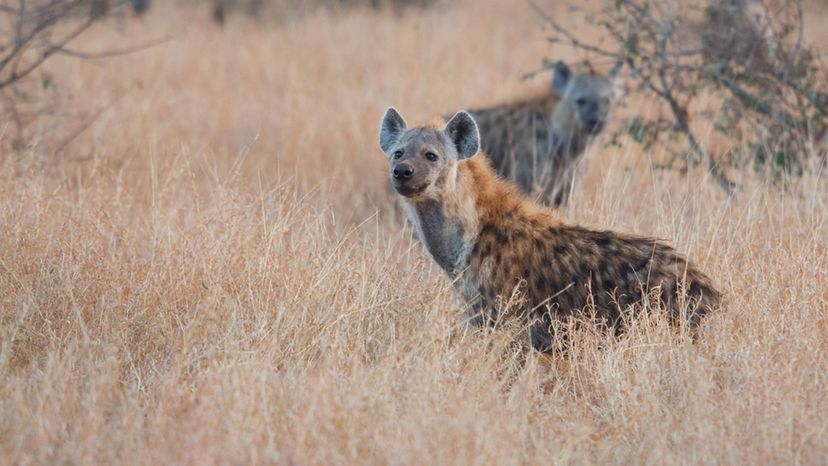
n/a
Which zoo animal is shown here?
Painted dog
Coyote
Wolf
Spotted hyena
The spotted hyena is known for its "laugh" and is also referred to as the laughing hyena. Hyena clans can include up to 100 individuals, and they operate based off a complex, matriarchal social order
Advertisement
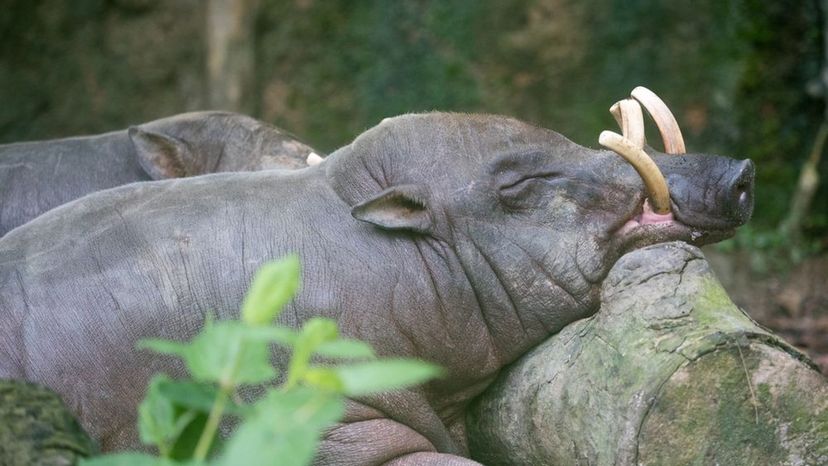
n/a
Which zoo animal is shown here?
Babirusa
Babirusas are found only in the Indonesian rain forest on the islands of Togian, Buru, Sulawesi, and Sula. There are four species of babirusas. The North sulawesi variety of babirusa is distinct from the other three in that the males have upper tusks, whereas other species only have the lower tusks.
Pig
Hog
Wombat

n/a
Which zoo animal is shown here?
Giraffidae
Tapir
Somali giraffe
The Somali giraffe, also known as the reticulated giraffe, is native to eastern Africa. The tallest land mammal alive, the male giraffe can grow up to 18 feet tall while the females can grow up to 16 feet.
Okapi

Shutterstock
Which zoo animal is shown here?
Somali Wild Ass
The Somali wild ass is critically endangered due to over-hunting and loss of habitat to livestock. Despite their short stature (4 feet tall), they can reach speeds of up to 30 miles per hour.
Mule
Deer
Pony
Advertisement
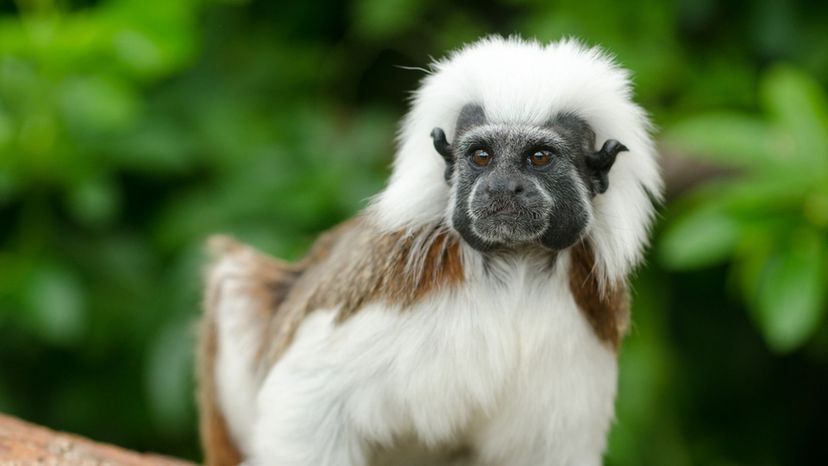
Shutterstock
Which zoo animal is shown here?
Orangutan
Gorilla
Cotton-Top tamarin
Weighing in at less than a pound, the cotton-top tamarin is found only in northwestern Columbia . The species is also considered to be critically endangered, with only 6,000 remaining in the wild due to the destruction of their habitat and deforestation.
Black-handed spider monkey
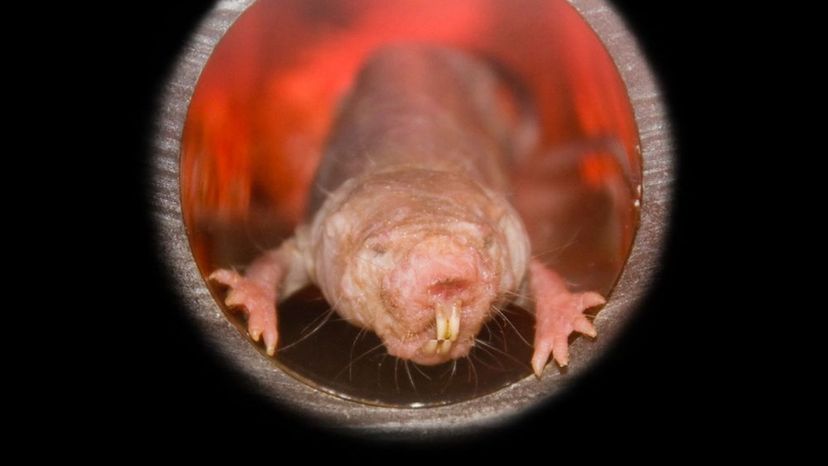
Shutterstock
Which zoo animal is shown here?
Pink rat
Mouse
Hamster
Naked Mole Rat
The naked mole rat is a very social creature that lives underground in large colonies, whereas other mole rat varieties live in smaller numbers with their families. This species does not feel pain through the skin.
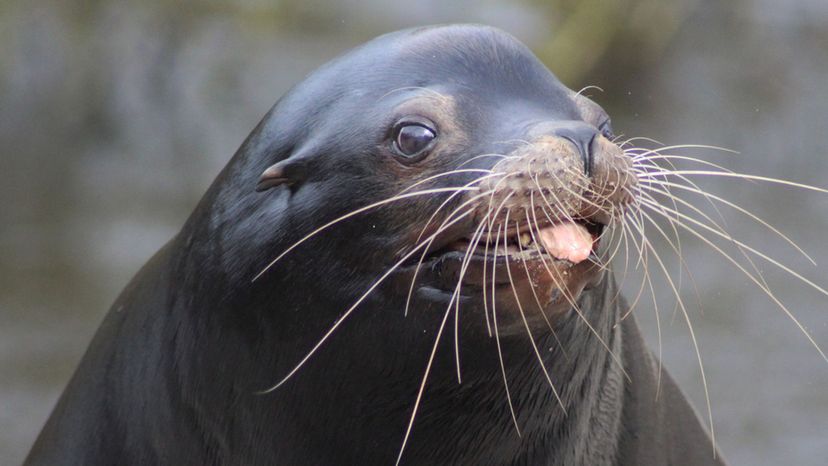
Shutterstock
Which zoo animal is shown here?
California Sea Lion
California sea lions can be found up and down the west coast of North America, from as far north as British Columbia to as far south as Mexico. The male sea lion is capable of consuming up to 30 pounds of food per day and is significantly larger than the female sea lion.
Walrus
Otter
Groundhog
Advertisement
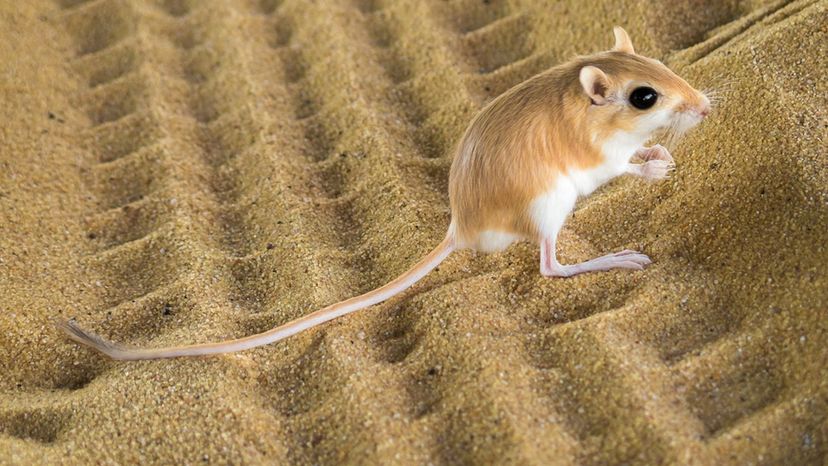
Shutterstock
Which zoo animal is shown here?
Wallaby
Kangaroo Rat
While its name comes from an Australian animal, the kangaroo rat is native to the south and southwestern United States. These rodents are capable of jumping up to 9 feet, and have no need to drink water, as their seed-based diet provides enough hydration to sustain them.
Koala
Wombat
You Got:
/50
Shutterstock
